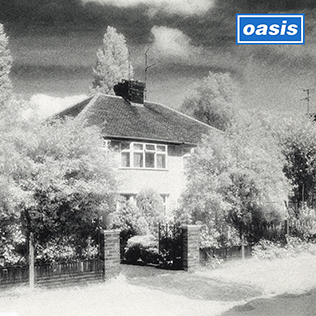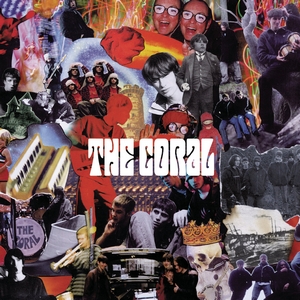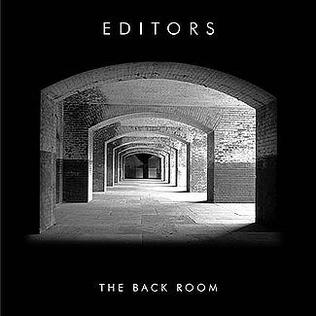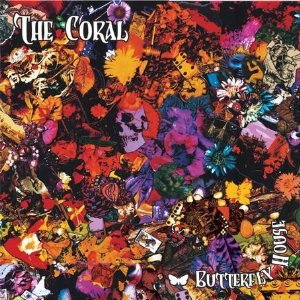
The Coral are an English rock band, formed in 1996 in Hoylake on the Wirral Peninsula, Merseyside. The band emerged during the early 2000s. Their 2002 debut album The Coral, from which came the single "Dreaming of You", was nominated for the Mercury Music Prize and listed as the fourth best album of the year by NME. Their second album, Magic and Medicine (2003), produced four UK Top 20 singles, including "Pass It On". In 2008, after guitarist Bill Ryder-Jones left the band, they continued as a five-piece.

The Remote Part is the third studio album by Scottish rock band Idlewild, released on 15 July 2002 by Parlophone. As they were becoming increasingly aware of their label's interest in them and their demos, the band's musical direction was being steered by guitarist Rod Jones. For the first half of 2001, the band recorded songs with producers Stephen Street and Lenny Kaye. Due to the uneven nature of the songs done between tours, they spent some time reworking 20 tracks in the Scottish Highlands. They recorded at Rockfield Studios in Wales, RAK Studios in London, and Sawmills Studios in Cornwall with producer Dave Eringa. Described as an alternative rock and indie rock record, it lacked the punk rock elements of their previous work.

Liquid Skin is the second album by English rock group Gomez, released on 13 September 1999 by Hut Records. Following the release of their debut studio album Bring It On (1998), the band began recording their follow-up between August 1998 and June 1999 at Parr Street Studios in Liverpool, and Abbey Road Studios in London. Gomez were allowed to self-produce the sessions after their label heard the strength of their demos. Described as a blues rock album, Liquid Skin was compared to the work of Beck, the Grateful Dead, and Pearl Jam.

The Zutons are an English indie rock band, formed in 2001 in Liverpool. The band are currently composed of singer, songwriter, and guitarist Dave McCabe, drummer Sean Payne, and saxophonist Abi Harding.

"Live Forever" is a song by the English rock band Oasis. Written by Noel Gallagher, the song was released as the third single from their debut album Definitely Maybe (1994) on 8 August 1994, just prior to that album's release. Gallagher began writing the song in 1991, before he joined Oasis.

The Coral is the debut studio album by British rock band the Coral. It was released on 29 July 2002, through the Deltasonic record label. After finalising their line-up, the band had a residency at The Cavern Club, and were spotted and signed by Alan Willis of Deltasonic soon afterwards. Following the release of a single and an EP, and two UK tours, the band began recording their debut album. Sessions were held at Linford Manor Studios, Milton Keynes in early 2002, and were produced by the Lightning Seeds frontman Ian Broudie and the Coral. Described as a neo-psychedelia and folk rock album, frontman James Skelly's voice was compared to Eric Burdon of the Animals and Jim Morrison of the Doors.

Magic and Medicine is the second studio album by English rock band the Coral. It was released on 28 July 2003, through Deltasonic. Within three months of releasing their self-titled debut studio album, the band began recording material for their next album in October 2002. Sessions were produced by the Lightning Seeds frontman Ian Broudie, with co-production from the Coral; recording continued in-between tours of the United States and Europe, finishing in April 2003. Described as a pop rock and psychedelic pop release, Magic and Medicine was compared to the work of the Animals, with frontman James Skelly's vocals recalling that band's frontman Eric Burdon.

Nightfreak and the Sons of Becker is a mini album and third studio album by English rock band the Coral, released on 26 January 2004 by Deltasonic. The Coral began writing the record less than a month after releasing their second studio album, Magic and Medicine (2003). Recording for the album took place over 12 days at Bryn Derwen Studios in Wales with producer Ian Broudie, frontman for the Lightning Seeds; the Coral served as co-producers. Described as a lo-fi neo-psychedelia release, Nightfreak is a concept album about German tennis player Boris Becker.

The Invisible Invasion is the fourth studio album by English rock band the Coral. It was released on 23 May 2005, through Deltasonic. Following on from the stop-gap release of the mini album Nightfreak and the Sons of Becker (2004), the band began recording their next album with Geoff Barrow and Adrian Utley of Portishead as producers. Sessions were mainly held at Monnow Valley Studio, with additional recording being done at Elevator Studios. Described as a psychedelia album, it had more of a stripped-down sound compared to their past releases.

The Back Room is the debut studio album of British rock band Editors; it was released on 25 July 2005 through Kitchenware Records. The Editors formed while attending university and later moved to Birmingham, where they played club shows and made demos. After signing to Kitchenware in late 2004, the band recorded their debut album at studios in Lincolnshire, London and Wolverhampton. Jim Abbiss produced all but one of the tracks; the exception was produced by Gavin Monaghan. The Back Room is a post-punk revival, gothic rock and indie pop album that has been compared to the works of Echo & the Bunnymen, Elbow and Interpol.

"Goodbye" is a song by English indie rock band The Coral taken from their debut album The Coral (2002). Released in July 2002, it was the second single taken from the album and charted at #21.

"Dreaming of You" is a song by English band the Coral from their eponymous debut album, The Coral. Released on 7 October 2002, it was the third single taken from the album and charted at number 13 on the UK Singles Chart. In October 2011, NME placed it at number 85 on its list "150 Best Tracks of the Past 15 Years".

Miles Peter Kane is an English singer and musician, best known as a solo artist and the co-frontman of the Last Shadow Puppets. He was also the former frontman of the Rascals, before the band announced their break-up in August 2009.

Singles Collection is a compilation album by The Coral, released on 15 September 2008 in the United Kingdom on the Deltasonic label. It featured a new song "Being Somebody Else", which was released as a single on 8 September 2008.

Butterfly House is the sixth full-length studio album by English indie rock band The Coral. The album was produced by John Leckie, whose previous collaborators include The Stone Roses and Radiohead. and was recorded at RAK studios in London as well as Rockfield in South Wales. It was released on 12 July 2010 to great critical acclaim. The album was recorded through a two-year span where the band road-tested the material. This is The Coral's first album without Bill Ryder-Jones, who departed in 2008. It peaked at #16 in the UK Album Charts but has since been a consistent seller for Deltasonic Records. The single, "1000 Years", reached #188 on the UK Singles Chart.

Love Undercover is the debut studio album by English rock group James Skelly & The Intenders. It was released on 3 June 2013, on Skeleton Key Records and Cooking Vinyl and reached No. 85 on the UK Albums Chart.

Distance Inbetween is the eighth studio album by the English indie rock band The Coral. It's their first album after a five-year hiatus, their first without guitarist Lee Southall and also the first with Southall's replacement, Paul Molloy. The album was released on 4 March 2016. The first single, "Chasing the Tail of a Dream", was released on 26 December 2015.

Move Through the Dawn is the ninth studio album by English rock band the Coral. It was released on 10 August 2018, under Ignition Records.

Coral Island is the tenth studio album by English rock band the Coral. Run On Records and Modern Sky UK released it on 30 April 2021. During the cycle for their ninth studio album Move Through the Dawn (2018), the band began stockpiling song ideas; on the way home from Blackpool, the band had the idea of making a concept album about a fictional town. With the assistance of Edwin Burdis, the band began mapping out the album. The recording sessions were held at Parr Street Studios in Liverpool, with the narration recorded at Ian Murrary's house in Merseyside; the band and Chris Taylor acted as producers. Described as a psychedelic album, it drew comparison to the Kinks' Village Green Preservation Society (1968), while the narration was reminiscent of that heard on the Small Faces' Ogdens' Nut Gone Flake (1968).



















